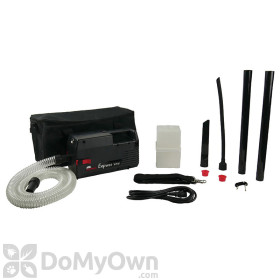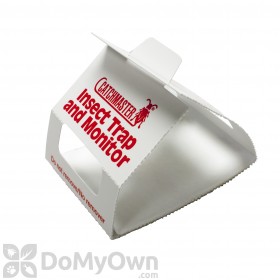Eliminate Brown Recluse Spiders by Removing Their Food and Shelter

Where to Inspect for Brown Recluse Spiders

A quick inspection of the premises can help you zero in on areas where brown recluse spiders are hiding, and where to focus the majority of your efforts. Keep in mind that brown recluse spiders often build webs in and around boxes and piles of clutter, inside wall voids, and under insulation. Long gloves, in addition to long sleeves and pants, should always be worn when conducting a careful inspection.
Pro Tip
Knock down spider webs on the interior and exterior of your home or structure as soon as you notice them. This will help discourage spiders from invading those areas.
Products needed for Step 1
Good Practices to Avoid Spider Bites
Before applying any treatment, you should always familiarize yourself and others who may be living or working in the building with practices to avoid spider bites, as the initial response of the spider after treatment may be to move about and become more active in response to the presence of chemicals.
- If the infestation is severe, clothing and shoes should be stored in sealed plastic bags inside drawers or inside plastic storage compartments hanging in closets.
- Shoes and clothing not stored in plastic bags should be shaken well before wearing.
- Beds should be moved out away from walls and curtains.
- Bed skirts should be removed and any bedspread used should not come in contact with the floor.
- Always inspect bedding before getting into bed.
Non-Chemical Measures for Brown Recluse Spiders
- Sanitation: Brown Recluse Spiders are often attracted to a building, home, or other structure by favorable conditions and hiding places surrounding the exterior. The following sanitation practices are recommended to remove brown recluse harborages:
- Piles of lumber, firewood, stones, boards, or other debris should be moved as far from the home or structure as possible, stored off the ground, and covered with plastic.
- Heavy vegetations such as ivy should be cut away from the foundation.
- Tall grasses should be regularly cut short.
- Improve storages in basements and garages by storing items off the floor and away from the wall; reducing clutter also limits available harborages.
- Spider Removal: Existing brown recluse spiders, webs, and egg sacs can be removed by way of a vacuum when they are spotted during an inspection. After vacuuming brown recluse spiders, the vacuum bag should be removed immediately after finishing and sealed in a plastic bag before being discarded in an outdoor garbage receptacle.
- Exclusion: Any cracks or gaps in the building exterior or surrounding eaves, vents, pipes, wires, and cables should be sealed with caulk after having been treated with a residual dust product. Doors should be fitted with weather strips on the bottom and all vents should contain tight-fitting screens.
- Inspecting Boxes and Other Stored Items: When one brown recluse spider is found living inside a stored box, all other stored boxes should be inspected. If spiders are left inside boxes, it allows a present infestation to worsen, or else may become a source of infestation at a new home when moving. While inspecting for spiders, always wear long sleeves tucked into gloves to avoid bites. A vacuum hose may be used to quickly remove any spiders as they are found. After all stored boxes and items have been inspected, replace items in their boxes and cover the corners and cracks of the box with tape to prevent spiders from entering in the future.
Products needed for Step 3
Chemical Treatments for Brown Recluse Spiders
Spraying a concentrated insecticide on the exterior of the structure using a hand pump sprayer or a backpack sprayer will help eliminate spiders that are already present and will also help eliminate food sources which will discourage new spiders from moving in.
- Dust Applications: The Brown Recluse spider isn't called a recluse for nothing. This spider prefers the secretive habitat of cracks and wall voids much more often than an indiscrete corner. Therefore, most of the treatments you will do for brown recluse spiders will involve a residual dust agent (we recommend Delta Dust Insecticide or Tempo Dust) puffed into cracks and crevices, wall voids, behind outlet covers and switch plates, and underneath insulation. This is best done with a professional Hand Duster (Read our article on proper dusting techniques).
- Contact Sprays: A non-residual aerosol insecticide can be sprayed directly on brown recluse spiders to eliminate live invaders. This treatment is a quicker and easier alternative to vacuuming. PT 565 PLUS XLO and CB-80 Extra are ideal flushing and contact agents for brown recluse spiders and just about every other pest you could have a problem with.
- Spot Treatments: A liquid residual wettable powder (like Demon WP Insecticide) or microencapsulated (ME, CS) formulation can be sprayed in corners, behind and under furniture, behind stored items, and on or around other areas where brown recluse spiders are found using a One Gallon Sprayer. The insecticide residual will kill existing spiders and prevent new spiders from building their webs. However, spot treatments alone will not provide adequate results and should be combined with other procedures.
- Exterior Treatments: Before sealing cracks in the exterior walls of the building, treat these openings with a residual dust (Delta Dust Insecticide or Tempo Dust) to prevent spiders from entering in the future.


















